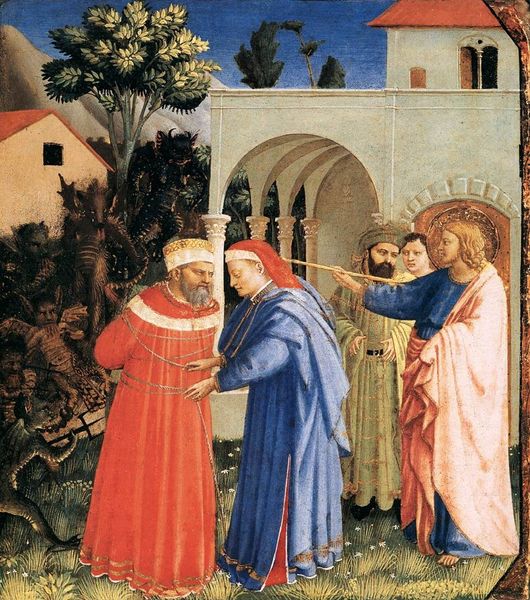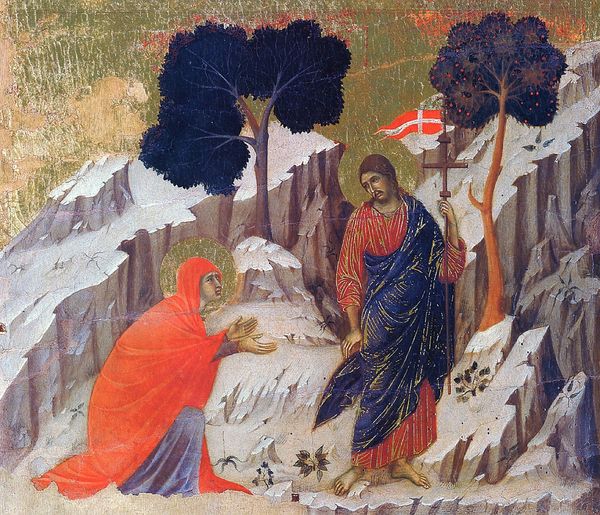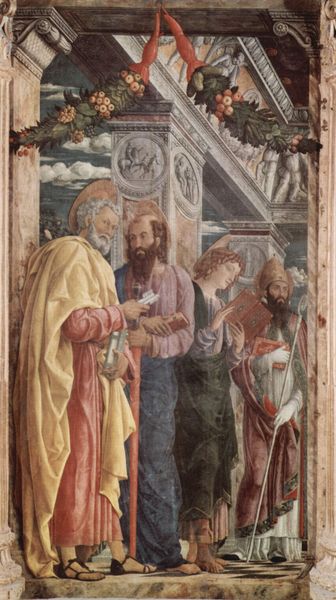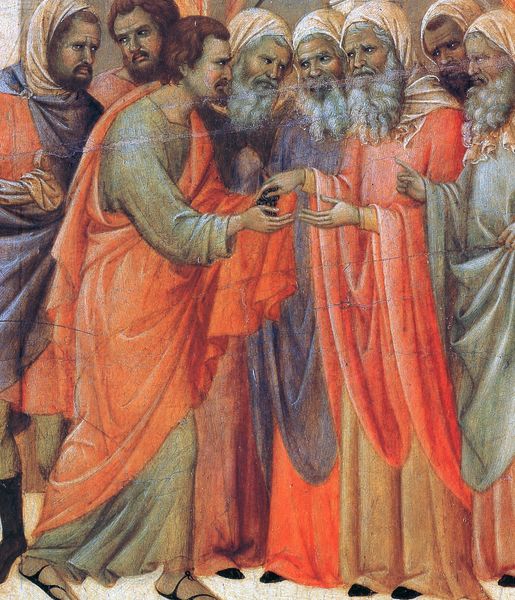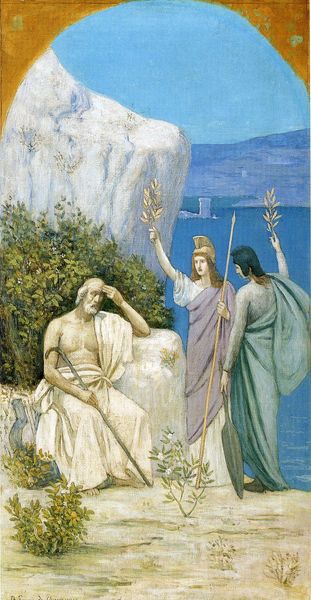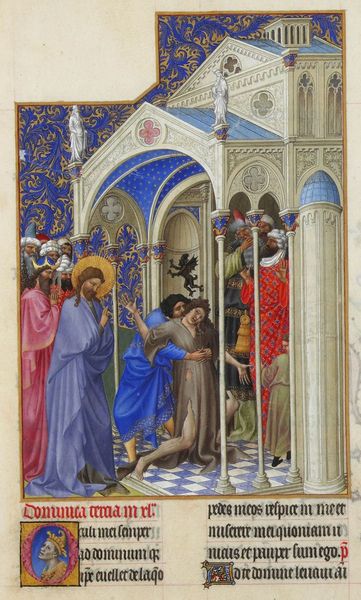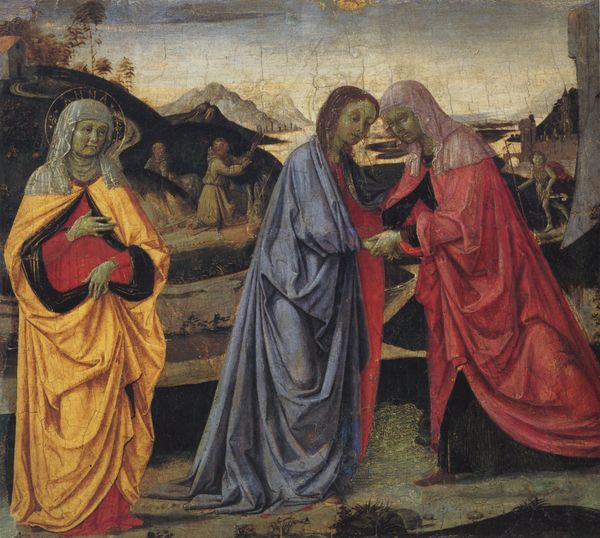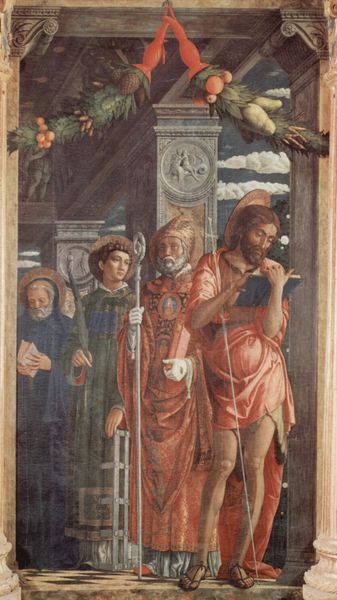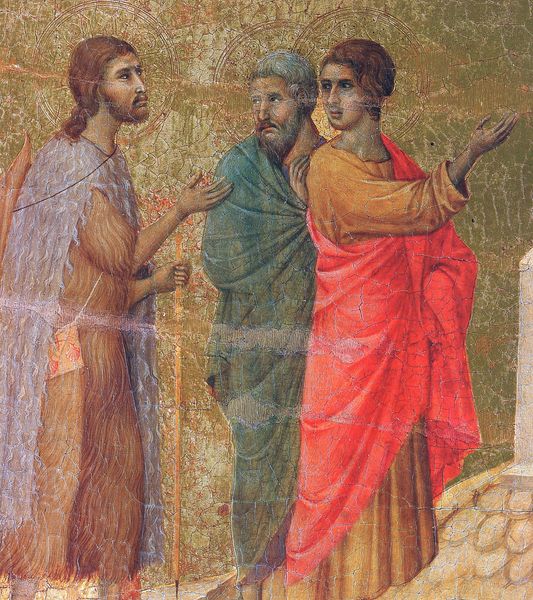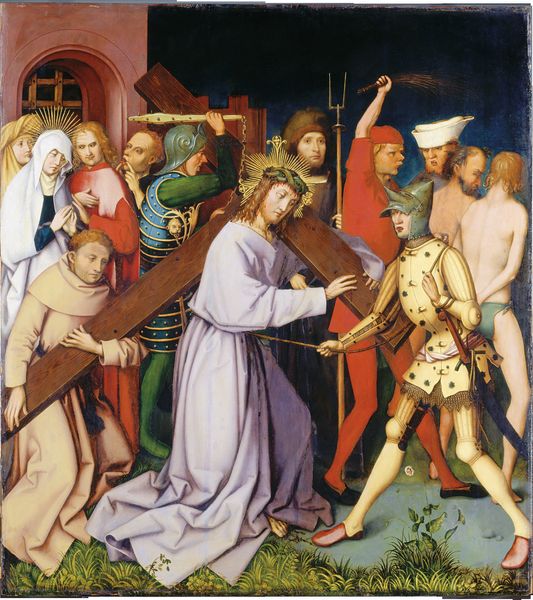
#
gouache
#
possibly oil pastel
#
oil painting
#
coloured pencil
#
green background
#
painting painterly
#
watercolour illustration
#
green and neutral
#
watercolor
#
warm toned green
Copyright: Public domain
Editor: This is "St. John the Baptist in the Wilderness," made around 1408 by the Limbourg brothers, seemingly with watercolors and gouache. It has a very peculiar flatness to it. What stands out to you? Curator: Consider the raw materials: pigments ground and suspended, the vellum painstakingly prepared. The artistic labor here involves transforming base substances into this image. Notice how the layering of paint, a laborious process, builds up the form without necessarily suggesting depth. Editor: It’s interesting to think of the artists’ hands involved with preparing these materials, not just creating the final image. But how does the materiality connect with its subject? Curator: The subject, Saint John, lived a life removed from luxury, clothed minimally in animal skins. Think about the source of pigments: were they locally sourced? Expensive imports? Dyes derived from plants? That influences not only the cost but the context of the image's creation. Are these colors easily procured or rare, influencing the economics of the image production? Editor: That's fascinating. The color choices may have as much to do with cost and availability as with any aesthetic preference. Does that influence how we consider images made today with infinite digital colors? Curator: Absolutely. Mass production changes our understanding of value. Labor is obscured. Rarity becomes simulated. Here, we see the direct evidence of craft; consider each precise mark. It grounds the image in a specific historical and economic reality. The medium truly shapes the message, connecting it to tangible conditions of creation and consumption. Editor: So, it becomes about acknowledging the social reality, production value, and the means by which this piece came into existence? I will not view Medieval Art in quite the same way.
Comments
No comments
Be the first to comment and join the conversation on the ultimate creative platform.

